Naesen: Even the greatest riders are only normal people
Belgian on the road from delivery driver to Classics contender
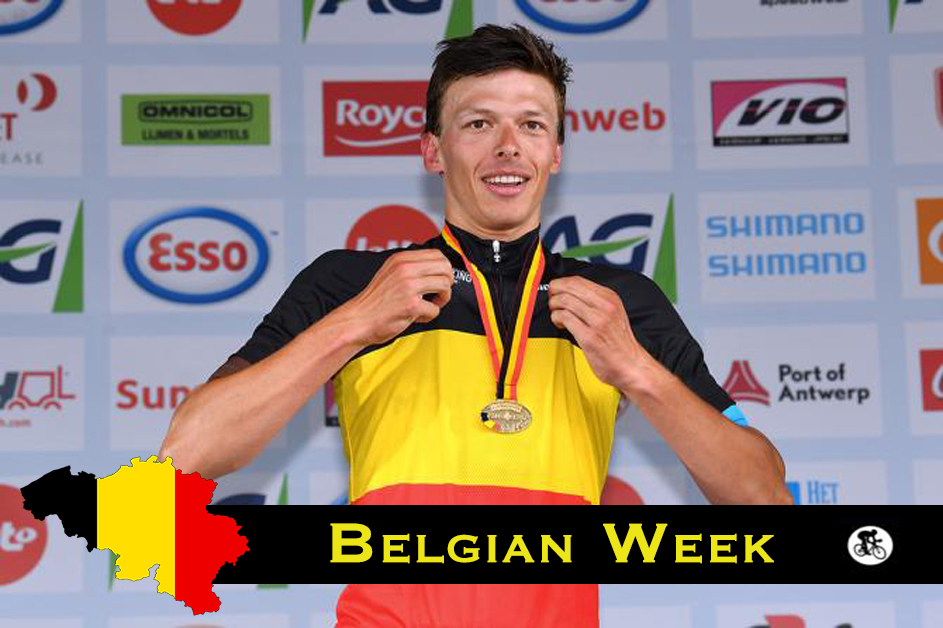
This article is part of 'Belgian Week' on Cyclingnews, a special run of features to celebrate the start of the Classics. For all our Belgian Week content click here.
Naesen and Wellens criticise Chris Froome's presence at Ruta del Sol
Naesen fit for opening weekend despite broken nose
Naesen: I think we can be ambitious
Wout Van Aert: Belgium's next big thing?
Naesen in doubt for Tour of Flanders after Dwars door Vlaanderen crash
The Tiegemberg is far from the steepest climb in the Flemish Ardennes, but the contours on the map would be altogether tighter if the cartographer had accounted for its positioning in the final, frantic kilometres of E3 Harelbeke.
A year ago, Oliver Naesen began to lose contact with the winning move at Harelbeke following Philippe Gilbert's sustained application of pressure on the Tiegemberg, and he crested the summit with 20 metres or so to recoup: a relative eon in the units of measurement particular to this corner of the world at this time of the year. Even so, Naesen stuck grimly to his task as the road dipped over the other side, and gradually began to claw back the inches that separated him from Gilbert and the third man in the equation, Greg Van Avermaet.
That Naesen counts Van Avermaet as both a training partner and friend was of no help whatsoever to his pursuit, however. No, rather than stall Gilbert, his one-time foe at BMC, Van Avermaet came to the front just as his friend was drawing close enough to touch their coattails. He delivered a stinging turn that threatened to distance Naesen all over again.
In Flanders, a race is a race and Naesen wouldn't have it any other way.
"Friends or not friends, it's professional cycling," Naesen says a year on. "We made it clear to ourselves and to each other: no matter how good he is or I am, we just have to race full for the victory. I would never be angry if he rides against me and I don't think he would be angry if I ride against him. The day after you have to be able to say, 'Yesterday was a race and today is another day.'"
Of course, Naesen and Van Avermaet, who hail from nearby Berlare and Zogge, respectively, tend to see one another most days when circumstances allow as part of a longstanding training group. As Gouden Greg segued Olympic-winning form into a golden Classics campaign last year, the emergence of his friend Naesen became one of the subplots to the main storyline.
Get The Leadout Newsletter
The latest race content, interviews, features, reviews and expert buying guides, direct to your inbox!
Van Avermaet helped himself to wins at E3 Harelbeke, Gent-Wevelgem and Paris-Roubaix, while Naesen underlined his own burgeoning credentials in the same period. He latched back on to that winning move and even tried to anticipate the final sprint before settling for third in Harelbeke.
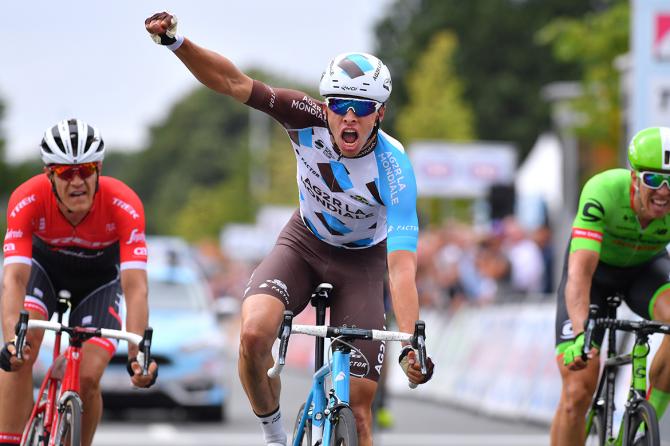
Having already recorded top 10 placings at Omloop Het Nieuwsblad, Kuurne-Brussel-Kuurne and Dwars door Vlaanderen, Naesen looked poised for his greatest result of all at the Tour of Flanders as he stalked the lone leader Gilbert in the august company of Van Avermaet and Peter Sagan.
The dream came undone when Sagan crashed at the front of the chasing group near the top of the Oude Kwaremont. While Van Avermaet, in his gilded spring, managed to get back up and win the sprint for second behind Gilbert, a disappointed Naesen took longer to remount, crossing the line in a 23rd place that didn't even coming close to telling the story of his day.
"In the worst case scenario, I would have been fourth in the Tour of Flanders – so to miss that because of a crash was for me very, very bad," Naesen says. "If we didn't crash would we have gotten back? Probably but we did crash, so all credit to the winner. But for me it was a very big shame."
That disappointment notwithstanding, the 27-year-old Naesen was the revelation of the Flemish campaign, and if his friendship with Van Avermaet was a calling card to the general public last April, this time around he is very much his own man. AG2R La Mondiale signed Naesen in 2017 hoping that he could keep their WorldTour points column ticking over in a previously fallow period. Now they believe they have a potential Classic winner on their hands.
"There's a bit more expectation from the team," Naesen says without sounding remotely overwhelmed by the burden. "Last year at the start of the Classics, they were like, 'Ok if you can get some top 10 placings, that would be great,' but now I feel from everything they say and do that they expect more. Which is logical, I also expect more – and hope for a lot more."
After claiming the Belgian national title from a five-man group in Antwerp last summer, Naesen is instantly recognisable to the casual fan on the roadside and he laughs at what is demanded of the man in the tricolour jersey in late March and early April, and at the Ronde in particular.
"Obviously, the average sports fan thinks the Belgian champion should be the best of Belgium and he should win, you know," Naesen says. "But it's nice; the fact that there is a little bit of pressure is a good sign. If I was going to the Classics and they just said, 'Anything you do is fine,' it wouldn't be such a good sign for my progress or my career."
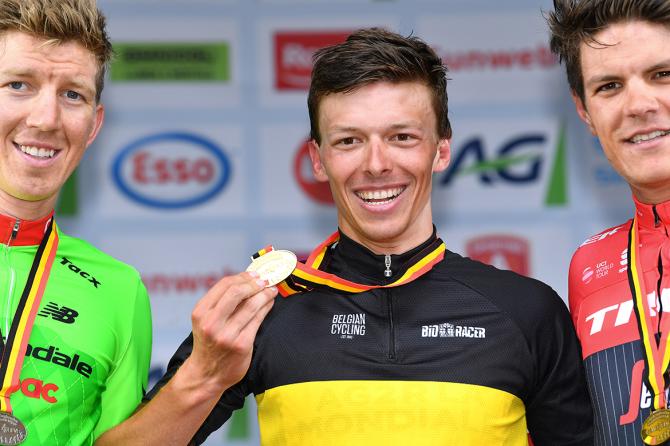
Being thrown a lifeline
Like so many Belgian teenagers in the middle part of the last decade, the young Oliver Naesen dreamt of being Tom Boonen when he grew up. And, like so many teenaged riders the world over, he was disabused of that notion almost as soon as he took out a racing licence and began to compete at the age of 16.
"The dream was very, very quickly shattered," Naesen says. "I didn't win any races as an under-17, and I didn't win any races as a junior. I wasn't bad but I wasn't on the level of the guys who were thinking they could maybe turn pro one day. I loved sports, and I wanted to do something with sports, but I said to myself it probably wasn't going to be as an athlete.”
On leaving school, Naesen enrolled for a sports science degree at the University of Ghent, though he continued to race at under-23 level in Belgium, albeit without harbouring any particular ambitions beyond the simple pleasure of competing on a Sunday. By the third year of the degree programme, however, Naesen found himself living increasingly for the weekend. Something had to give.
"It was half and half, cycling and studying. In retrospect, to continue like that would have brought me nowhere. I wouldn't have graduated and I also wouldn't have turned pro," says Naesen. "The choice for me was to stop school, get a job and see what's what."
The job was as the driver of a delivery truck and the hours would have made Travis Bickle wince, but, despite the 5am wake-up call, Naesen happened upon a structure that proved conducive to his training. By 2014, he was riding for the Cibel Continental team, all while holding down a full-time job.
"I only got back from work at 4.30pm, but by 5 I was on the bike, and in those two years I did 25,000 plus kilometres which means that every day I was doing at least 3-4 hours," he says. "Luckily, my first year when I was working my results skyrocketed really fast and I found the motivation to do two years of a spartan regime. It was super early mornings, super late nights. It was only training and working, nothing besides it."
By his own admission, Naesen's cycling career would not have lasted much longer in those conditions had he not been thrown a lifeline in the form of a stagiaire's contract with Lotto-Soudal in the summer of 2014. That encouragement was enough for him to take a period of leave from his job, and that brush with the professional peloton sufficed for Naesen to earn a deal with Topsport Vlaanderen-Baloise in 2015.
The team's avowed mission is to act as a nursery of young Belgian talent, and so it was perhaps an early indication of Naesen's standing that they broke with their own youth policy to sign him up at the relatively venerable age of 24.
"They never take anyone who isn't under-23 anymore, so they made an exception for me and I'm very grateful for that. In Belgium, it's a shame that once you're over 22, the cycling world just says, 'For you it's too late, it's over,'" says Naesen, who believes that his real life experience gave him something of an edge over fellow neophytes barely out of their teens.
"They just have no idea of what normal life is, so they don't really appreciate the opportunity they get. For me it was different. I'm more proud of what I did in those two years before I turned pro than of what I've done since.
"Once I turned pro, I just had to have a bit of discipline and stay focused, but what I did to turn pro, that was a real effort and it's what made me the rider I am. It's important to know that as a pro cyclist you have an amazing opportunity to have a great professional career. But if you don't know that, you just let it slide without knowing what real life is."
Naesen is speaking two days after completing a rain-soaked edition of Paris-Nice while still recovering from the after-effects of a broken nose sustained in a crash on the Ruta del Sol last month. Surely now, in his fourth season in the paid ranks, his sense of wonderment at his good fortune must be beginning to wear off?
"No, there's not a day when I think I'd rather be this or that instead," Naesen insists. "The only thing that's changed is that when I was a first-year pro, I rode my bike 365 days of the year. I just trained to have the most kilometres and the most hours. Now I train to ride faster, and I've learned that you need to rest too. So after Amstel, for instance, I'll take a week off completely, but my motivation is exactly the same."
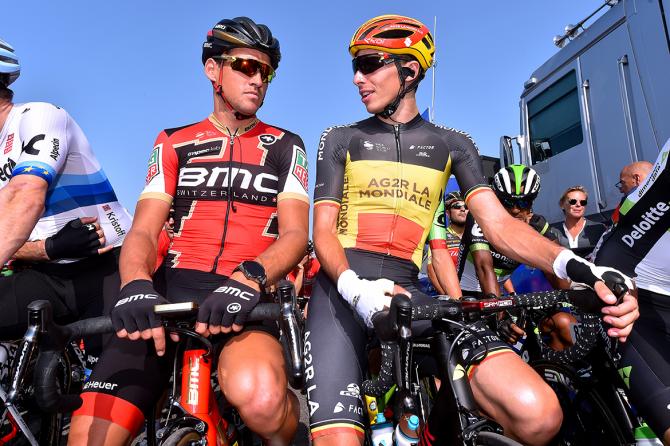
A team is only as strong as its leader
Since his first outing at Topsport, Naesen has raced like a man making up for lost time. "From day one, I felt I belonged in the pro peloton," he says matter-of-factly. An assured spring campaign and a maiden professional victory at La Polynormande in 2015 earned him an instant elevation to WorldTour level at IAM Cycling, and the progression continued apace the following year. A string of strong showings, including 13th in Paris-Roubaix, drew the eye, before victory in the Bretagne Classic-Ouest France in Plouay underlined his quality.
When IAM announced its departure from professional cycling in May of that year, Van Avermaet told Naesen that he would act as a reference on his behalf with BMC. Van Avermaet was as good as his word, but his team's management was underwhelmed by the prospect of signing up Naesen and the prospect quickly receded.
"When Greg asked if it was possible to take Oli on the team, they just asked him: 'Who?' [Jim] Ochowicz had never heard of me. So that didn't happen," says Naesen. "Greg wanted me. In retrospect, if I had gone there, it would have been the worst thing I could have done, but at that moment I would have been super happy to sign with them."
The temporary disappointment quickly abated when Naesen fielded a phone call from AG2R La Mondiale manager Vincent Lavenu during that year's Critérium du Dauphiné. The French squad had already snapped up Stijn Vandenbergh, and his recommendation was good enough for Lavenu. Within two weeks, Naesen put pen to paper.
"There is a big difference between a manager who says, 'Who is he exactly?' and a sports director who calls you directly," Naesen says. "The decision was pretty quick. My agent had talked to a lot of other teams but I didn't want to wait until after the Tour de France like they wanted. I went for the sure thing because with my background and knowing how hard real life is. I knew I didn't have the luxury to let the chance slip away."
Now in his second year at AG2R, Naesen maintains that with Stijn Vandenbergh, Silvan Dillier, Tony Gallopin and Alexis Gougeard for company on the cobbles, he is he is flanked by one of the strongest Classics teams in professional cycling, though he adds one important caveat.
"Collectively, in terms of the entire team's strength, I think only Quick-Step are above us," Naesen says. "But a team is only as strong as its leader and I think – I mean, I'm sure – Sagan and Greg are still bigger and stronger riders than me. So all in all, I would put us in the top five of the best teams."
Such frank self-assessment shouldn't be mistaken for a lack of belief, but is simply in keeping with Naesen's forthright nature.
Asked to compare his condition this March with that of a year ago, for instance, he doesn't skip a beat: "I can say that I've never been in better shape than in this moment. Every power record I've ever set, from one minute to one and a half hours, are all from Paris-Nice 2018."
Naesen has made tangible progress in each of his three Classics campaigns to date, and he believes he can make an even bigger step forward in 2018, even if he acknowledges that tactically as much as physically, there is a world of difference between riding for placings and racing for the win.
"With the level I have now, and I had last year, it has to be possible to win a Classic or at least a semi-Classic. Guys who are weaker have done it before, but it's way tactical now," Naesen says. "To ride for top 10 is not so hard, you just have to be in the front and then do a sprint. But to win, I need to do something special to win it because I'm not going to win a sprint against Sagan or Van Avermaet."
Therein lies the conundrum for Naesen, who has hardly been prolific as a professional to date, winning just one race per season. He would gladly settle for the same ratio in 2018, mind, so long as the victory comes on the cobbles between E3 Hareleke on Friday and Paris-Roubaix on April 8.
"Last year, I raced to have certain top tens and I didn't take too many risks," he says. "But this year, it's different. There are eight Classics, I want to sacrifice seven top 10 places for one victory."
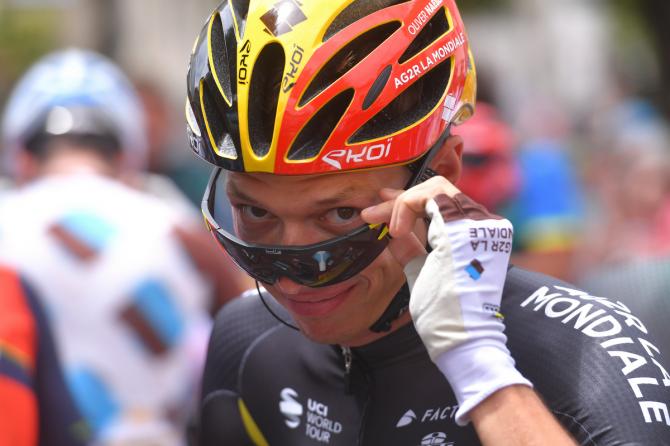
Even the greatest are only normal people
If Naesen already evinced a certain confidence even before his break-out spring of 2017, it stemmed in no small part from those repeated training rides with Van Avermaet and friends in Flanders' cobbled heartland.
"It's simple: if you train with the best, you're going to get better eventually," he says.
Yet racing with the best is something else altogether. This time 12 months ago, for all that he could spar with Van Avermaet as an equal in training, Naesen still harboured misgivings about his ability to trade blows with the strongmen when they weren't pulling their punches. The doubts began to melt, perhaps, as he clawed his way back up to Van Avermaet and Gilbert on the run-in to Harelbeke. This was where he belonged.
"Before last year, if I went full gas on the front on the Kwaremont, let's say, then in the back of my head I would always be thinking, 'Oh, oh, I hope nobody attacks me now,'" Naesen says.
"But last year I discovered that if I go as hard as I can on a climb, the others are also suffering just as much. You have to see with your own eyes to believe it. It gives you a lot of confidence. That's something you really need as a rider, to realise that even the greatest are only normal people."

Barry Ryan was Head of Features at Cyclingnews. He has covered professional cycling since 2010, reporting from the Tour de France, Giro d’Italia and events from Argentina to Japan. His writing has appeared in The Independent, Procycling and Cycling Plus. He is the author of The Ascent: Sean Kelly, Stephen Roche and the Rise of Irish Cycling’s Golden Generation, published by Gill Books.